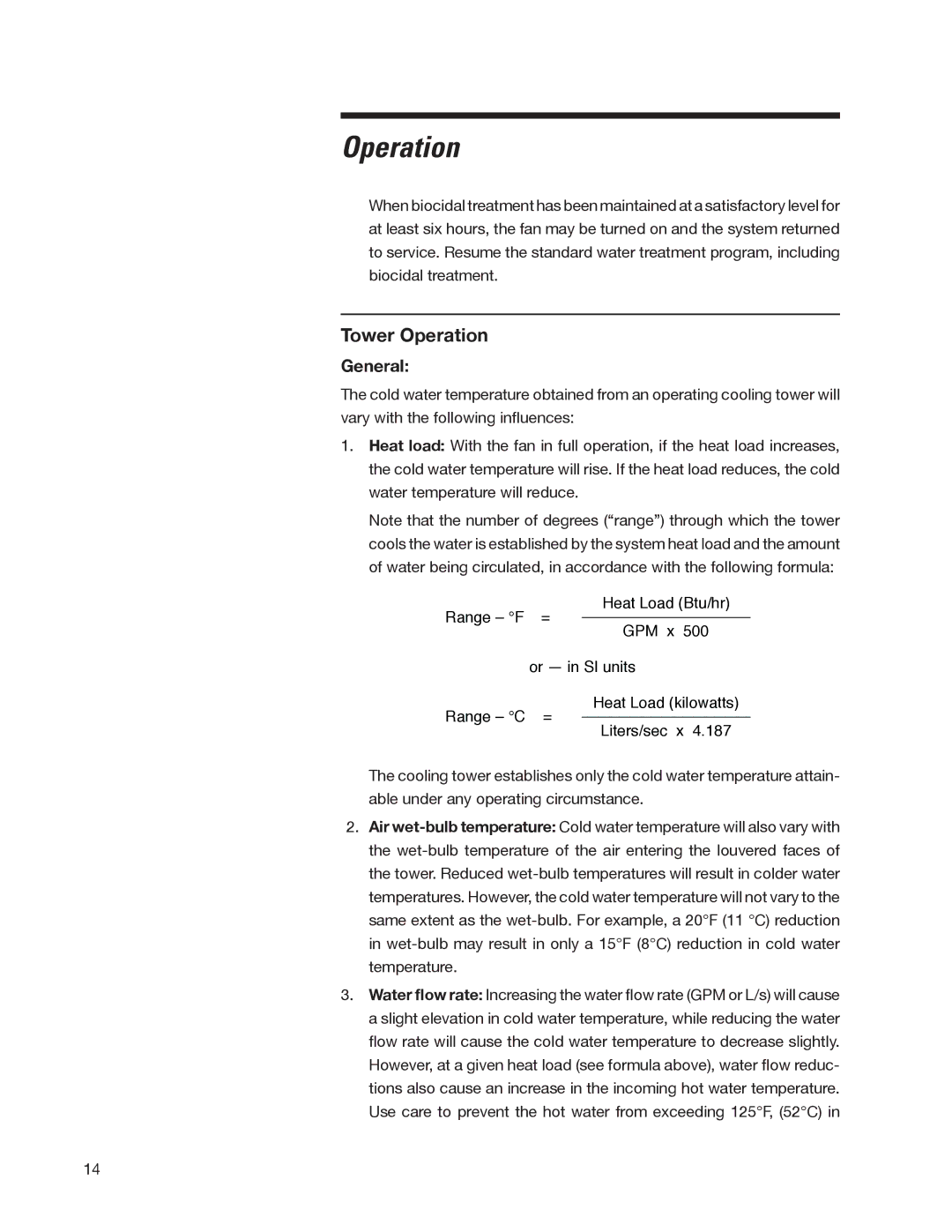
Operation
When biocidal treatment has been maintained at a satisfactory level for at least six hours, the fan may be turned on and the system returned to service. Resume the standard water treatment program, including biocidal treatment.
Tower Operation
General:
The cold water temperature obtained from an operating cooling tower will vary with the following influences:
1.Heat load: With the fan in full operation, if the heat load increases, the cold water temperature will rise. If the heat load reduces, the cold water temperature will reduce.
Note that the number of degrees (“range”) through which the tower cools the water is established by the system heat load and the amount of water being circulated, in accordance with the following formula:
Range – °F | = | Heat Load (Btu/hr) | |
GPM x 500 | |||
|
| ||
| or — in SI units | ||
Range – °C | = | Heat Load (kilowatts) | |
Liters/sec x 4.187 | |||
|
| ||
The cooling tower establishes only the cold water temperature attain- able under any operating circumstance.
2.Air
3.Water flow rate: Increasing the water flow rate (GPM or L/s) will cause a slight elevation in cold water temperature, while reducing the water flow rate will cause the cold water temperature to decrease slightly. However, at a given heat load (see formula above), water flow reduc- tions also cause an increase in the incoming hot water temperature. Use care to prevent the hot water from exceeding 125°F, (52°C) in
14
